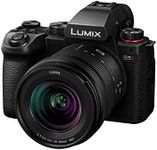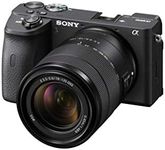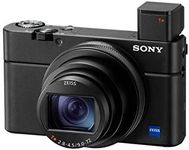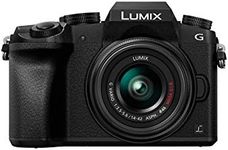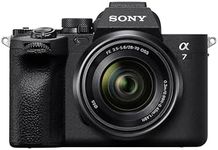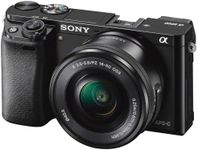Buying Guide for the Best Camera For Safaris
When choosing a camera for safaris, it's important to consider the unique challenges and opportunities that wildlife photography presents. You'll need a camera that can handle varying light conditions, capture fast-moving subjects, and offer versatility in terms of zoom and focus. The right camera will help you capture stunning images of wildlife in their natural habitat, so it's crucial to understand the key specifications that will impact your photography experience.Sensor SizeThe sensor size of a camera determines how much light it can capture, which affects image quality, especially in low-light conditions. Larger sensors, like full-frame or APS-C, generally provide better image quality and perform well in low light, which is common during safaris at dawn or dusk. If you plan to print large photos or need high detail, opt for a larger sensor. However, larger sensors can make cameras bulkier and more expensive, so consider your need for portability and budget.
Zoom LensA zoom lens allows you to get close-up shots of distant wildlife without disturbing them. Optical zoom is preferred over digital zoom as it maintains image quality. For safaris, a lens with a focal length of at least 200mm is recommended, with 300mm or more being ideal for capturing detailed shots of animals from a distance. Consider a camera with interchangeable lenses if you want flexibility, or a bridge camera with a powerful built-in zoom for convenience.
Autofocus SystemA good autofocus system is crucial for capturing sharp images of moving animals. Look for cameras with fast and accurate autofocus, which often have multiple focus points and advanced tracking capabilities. Cameras with phase-detection autofocus tend to perform better in tracking fast-moving subjects. If you plan to photograph fast-moving wildlife, prioritize a camera with a reliable autofocus system to ensure you don't miss the perfect shot.
Burst ModeBurst mode, or continuous shooting, allows you to take multiple photos in quick succession, which is useful for capturing action shots of wildlife. The speed of burst mode is measured in frames per second (fps). For safari photography, a camera with at least 5 fps is recommended, but higher speeds like 10 fps or more can be beneficial for capturing fast action. Consider how often you anticipate needing to capture rapid sequences when choosing your camera.
Image StabilizationImage stabilization helps reduce blur caused by camera shake, which is especially useful when shooting with long zoom lenses or in low light. There are two types: optical and digital. Optical stabilization is generally more effective and is preferred for safari photography. If you plan to shoot handheld or in challenging conditions, look for a camera with good image stabilization to ensure sharp images.
Weather SealingWeather sealing protects your camera from dust, moisture, and other environmental factors, which is important in the often harsh conditions of a safari. Cameras with weather sealing are more durable and can withstand the elements better than those without. If you expect to encounter rain, dust, or extreme temperatures, prioritize a camera with weather sealing to ensure it can handle the safari environment.
